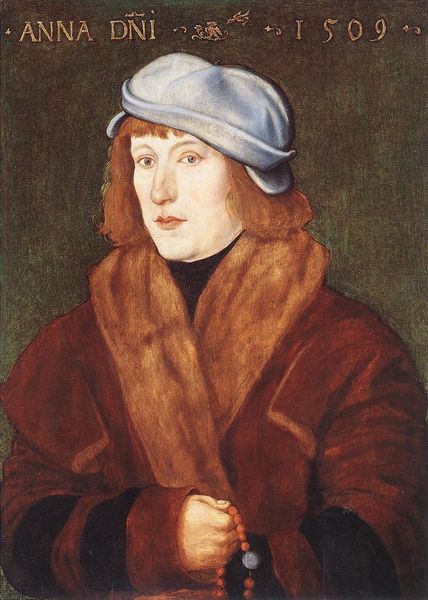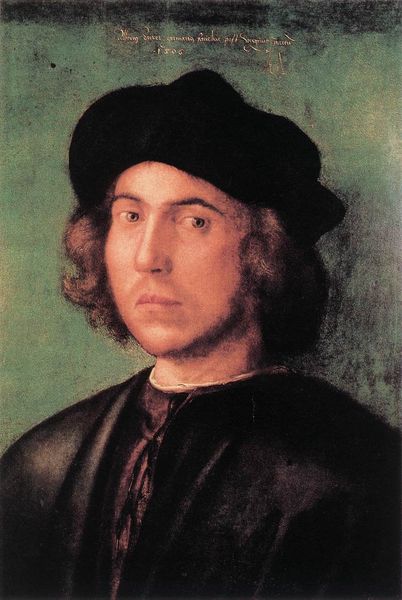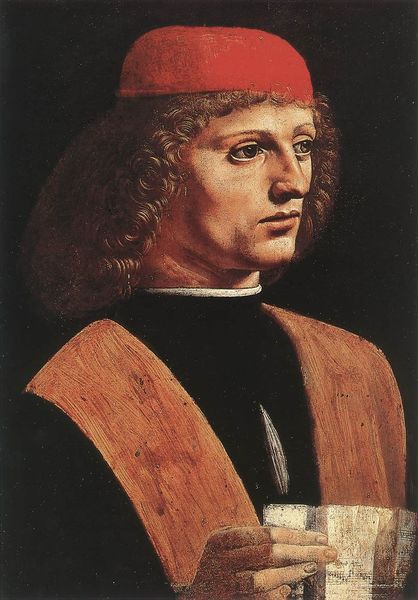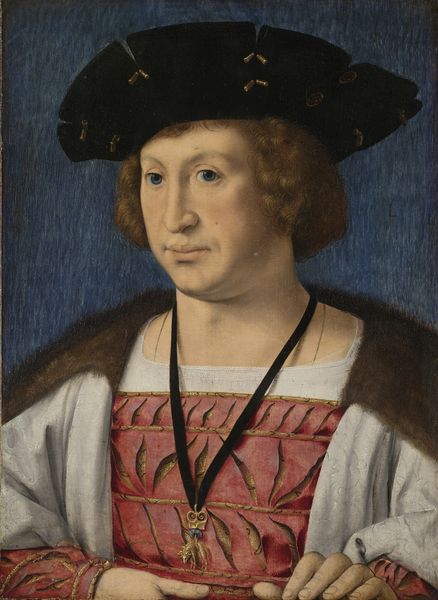
painting, oil-paint
#
portrait
#
portrait image
#
portrait
#
painting
#
oil-paint
#
figuration
#
portrait reference
#
famous-people
#
male-portraits
#
portrait head and shoulder
#
human
#
animal drawing portrait
#
portrait drawing
#
facial portrait
#
northern-renaissance
#
portrait art
#
fine art portrait
#
realism
#
digital portrait
Copyright: Public domain
Editor: So here we have Lucas Cranach the Elder's portrait of Georg Spalatin, painted in 1509 using oil on panel. It's striking how matter-of-fact it is. Not a lot of fluff, you know? What stands out to you about it? Curator: What grabs my attention is the sheer labor and skill involved in rendering textures, from the delicate wisps of hair to the smooth, almost metallic sheen of his garment. This wasn't just about representation; it was about displaying wealth and status through the very *act* of creation. Editor: So you’re saying the materials themselves become part of the message? How so? Curator: Absolutely. Oil paint, at this time, was relatively new and expensive. Its capacity for creating depth and luminosity wasn't just aesthetic—it signaled economic power and access to cutting-edge techniques. Who do you imagine had access to these resources? And what story does that tell us about Spalatin and Cranach? Editor: Probably someone pretty wealthy and connected. It kind of highlights the patron-artist relationship too, doesn't it? Spalatin enabling Cranach's work through his patronage...it's a co-production almost? Curator: Precisely. It invites us to consider the social and economic dynamics embedded in the production of art. Furthermore, oil paint required specific pigments, some rarer and more expensive than others. Think about the global trade networks at play, all contributing to the materiality of this single image. Editor: I never really thought about that…all the stuff, and labor, it took to just *make* the materials! That totally changes how I look at portraits from this time. Curator: Exactly! It prompts us to move beyond a simple appreciation of artistic skill, toward a deeper understanding of the art's means of production and the broader context of material culture. Editor: Well, I'll definitely be keeping an eye on the *how* and *what* things were made of from now on, instead of just the who and the when!
Comments
No comments
Be the first to comment and join the conversation on the ultimate creative platform.













